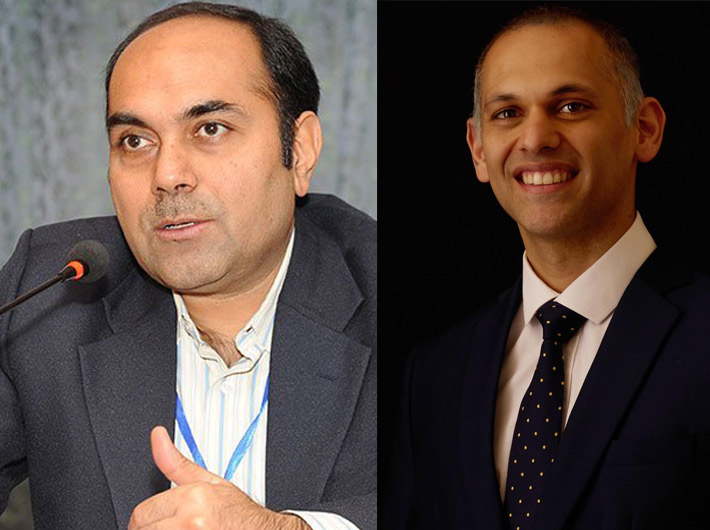Tata Memorial study calls for policy intervention to determine economic burden of disease
A first-of-its-kind study on the economic loss due to premature death from oral cancer in India by the Tata Memorial Centre has found that this form of cancer has a premature mortality rate of 75.6% (34 premature events / 45 total events) resulting in productivity loss of approximately $5.6 billion in 2022 or 0.18% of India's GDP. Almost 27% of all cancer cases in the country can be attributed to tobacco or tobacco products.
The study, “A prospective health economic evaluation to determine the productivity loss due to premature mortality from oral cancer in India”, by Dr. Pankaj Chaturvedi, Director, ACTREC, and his team is the first such study in India and among a handful globally where estimates were calculated utilising real-time patient data that was collected prospectively for up to three years. The enormous data collection has resulted in determining the total lost productivity due to premature mortality related to oral cancer, i.e., per patient loss to society due to non-participation directly attributable to oral cancer.
It was conducted at a single tertiary cancer hospital which drains patients from across the country based on follow-up and survival data of patients.
According to WHO, India’s cancer scenario is burdened with oral cavity cancer being the most common among men. In fact, India accounts for almost a third of the global incidence and mortality related to oral cancer and the treatment is morbid often resulting in loss of communication, swallowing and breathing with high chance of early recurrence of disease. The age of initiation of tobacco use in India is very young, adding to early-age incidence of oral cancer.
The study calculated productivity lost due to premature mortality using a method known as human capital approach and provides in-depth information on the productivity loss resulting from premature mortality of oral cancer that can assist policy makers in planning disbursements more effectively. In a country where the affordability gap is wide, these results are important to deliver a disease-driven, objective strategy for oral cancer care.
Dr Arjun Singh, Assistant Professor, Tata Memorial Hospital, and the lead author of the study, said that with 671 years lost to early (29.8%) and advanced cancers (70.2%), loss of productivity was $41,900 in early and $96,044 in advanced stage. Based on population level rates, total cost of premature mortality was $5.6 billion representing 0.18% of GDP.
“Considering pensionable age in India being 62 years, 91% of the deaths or incurable recurrence of cancers were in the premature age groups with a median age of 41.5 years. Both, early (70%) and advanced (86%) stage cancers were from a middle-class socioeconomic status, with 53% requiring some form of insurance schemes or financial support in order to complete treatment.
“While in most economic studies assumptions are considered for market wages and other indicators during calculations. Here individual patient data (including market and non-market contribution, socioeconomic status, education level, etc.) was gathered prospectively over extended time period. The results were in line with the national labour force participation (48%) and unemployment rates (7%) as reported by the National Sample Survey Office (NSSO) India. Productivity lost due to premature mortality among females and males was Rs 57,22,803 and Rs 71,83,917 respectively per death,” said Dr Arjun Singh.
As per the study, loss of productivity to society was Rs 31,29,092 per early-stage and Rs 71,72,566 per advanced-stage cancer. Based on death rates in the population these results show that the total cost of lost productivity due to premature oral cancer mortality in India in 2022 was $5.6 billion representing 0.18% of the combined gross domestic product. These results underestimate the impact of variability in treatments and its access that exists across the country.
“While population data has been derived from an internationally validated registry, the GLOBOCAN, the true burden might be much more as the population coverage in low- and middle-income countries is estimated to represent less than ten percent of the actual population,” added Dr Arjun Singh.
Due to the younger age of initiation of tobacco and areca nut usage in India, oral cancers tends to develop in younger individuals as well putting significant strain on productivity of economy. It also leads to devastating consequences for individuals, families, society and the economy. Tailored prevention policies that target this young age group are needed to be implemented. Screening and early detection strategies among high-risk groups need to be prioritized. The direct and indirect expenditures for oral cancers affect individuals and their families pushing the economically disadvantaged further into a debt-cycle and poverty, the study says.
“Oral cancer is preventable and early detection can save lives. The main etiological agents for oral cancer are tobacco, alcohol and areca nuts. Our study finds $5.6 billion of revenue loss. The policy makers and Bollywood celebrities must realise that it is not just Pan Masala causing cancer, but huge economic loss to the country amounting to billions of dollars caused by oral cancer deaths is not helping us become a developed country. We are losing many young people to oral cancer just because we have been oblivious to the fact that it not just a health issue but financial issue,” said Dr Pankaj Chaturvedi.

